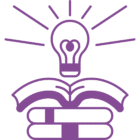When I talk about gamification, I often use these three E’s: exciting, engaging, and encouraging. These three concepts explain how gamification, the art of applying game design principles to non-game situations, can support a healthy work environment, improve employee satisfaction, and increase productivity. Gamification is often key to user adoption of technology and processes, as well as long-term program success.
Gamification can be applied to a number of workplace activities, and there are plenty of techniques to be leveraged. After providing some background on gamification and common gamification techniques, I’m going to provide four gamification use cases, a proposed approach, and the benefits of each.
Defining Gamification
One of the initial goals of gamification was to make consumer software more engaging. Software designers turned to motivational techniques standard in games, both digital and non-digital, and started to leverage concepts such as points and rewards to increase appeal. Gamification has been adopted more and grown in scope over the last decade, but the main idea has remained the same.
Gamification is applying game concepts to improve user experience in non-game situations.
To deepen our understanding of what gamification means, let’s take a look at some commonly used game concepts.
Rules
The first game concept used in gamification is rules. While often the opposite of engaging and fun, rules are leveraged to give users the criteria and guidelines for success. Rules present answers to the following player questions:
- What could disqualify me from participating?
- When can I make progress toward a goal?
- How do I know that I have completed the activity?
- What limits the amount of success that I can achieve in one session?
Nobody likes restrictions that hold them back, but participants can use rules to completely understand the game and maximize their own success. To facilitate this, rules need to be clearly communicated to ensure participants are not confused, overwhelmed, or discouraged from continuing. Additionally, rules help organizations confirm that users are learning, i.e. requiring users to complete a quiz or other learning step before earning a reward. A well-written set of rules can be the difference maker when attracting participants and keeping them engaged.
Points
Points are a gamification system for tracking task completion. Determining what tasks (or achievements) provide points is a key part of game design. Participants should receive points for achieving certain results, whether that be watching training videos, meeting learning objectives, or completing activities within a time structure to encourage retention. Similar to rules, points motivate participants to complete activities and maximize their output.
Once participants start earning points, they typically begin competing with themselves and their peers to earn the most points. A natural extension of this in gamification is to include a leaderboard so that participants can see where they fall and compete to rank higher than their colleagues. In this way, points provide a visual representation of the growth and learning achieved by a user up until that point. Points and leaderboards can be a successful addition and motivate employees to complete more tasks, but they’re not for everyone. The goal of points is to give participants a sense of accomplishment so that they continue to complete tasks. Some users may find this daunting, so other techniques may be necessary.
Rewards
Often the hook that entices players to keep going and grind to win, rewards are incentives for participation and success. While points are one type of reward, rewards can be
- digital or physical badges recognizing achievements,
- company swag or other physical rewards,
- additional paid time off hours, or
- public recognition.
Rewards are a vital part of the standard compulsion loop that keeps participants completing tasks. Participants complete a task, receive a reward, and are invited to complete the same task again or the next step. Receiving the reward makes participants eager to continue and get more rewards. Keep in mind that each participant is likely to respond differently to rewards, so it is important to diversify the type of rewards available as well as ensure rewards are also available for participation rather than only winning.
If planned or executed poorly, gamification may have negative consequences. For instance, if employees are rewarded for contributing content regardless of content quality, then someone could create junk in order to receive the reward. If employees are rewarded for contributing to a community of practice, then they could comment gibberish on all posts rather than start or drive conversations. In order to avoid risks, gamification needs to iteratively measure both value and outcomes, evaluate effectiveness, and adapt to an organization’s needs and goals.
Gamification Use Cases
Now that we have a better understanding of the techniques used in gamification, let’s look at a few use cases, how gamification could be applied, and the benefits of implementing gamification. The gamification techniques for each use case are presented as an example and should not be treated as perfect.
Policy Training
| Use Case: | An organization wants to train employees about key policies on an annual basis. |
| Gamification: | The organization produces a set of courses that feature memorable use case stories, quizzes, and games. Each course tracks a participant’s score based on quick time events, quiz results, and game success. Company swag is provided to those that score the highest. |
| Benefits: | Using interactions and scoring, the organization increases participant engagement in each course, improving participation and learning retention. The reward for high scores encourages participants to improve their understanding of the material. |
| Business Outcome: | Reduces time spent asking questions and waiting for answers about policies. This also frees up human resource employees for other work. |
Knowledge Base Creation
| Use Case: | An organization wants to fill a knowledge base with documentation and lessons learned from employees. This is one of the most common knowledge management efforts. |
| Gamification: | Employees earn points when they produce content and when their content receives a favorable rating from colleagues. Points are normalized and considered as part of employee reviews. |
| Benefits: | Rewarding employees with points that can improve their performance reviews motivates them to produce high-quality content that their peers will appreciate. |
| Business Outcome: | Employees spend less time searching for materials, can reuse previously created content, and can benefit from their colleagues’ experiences. |
Online Course Library
| Use Case: | To support individual development and learning, an organization wants to build an online course library for recommended employee skills. |
| Gamification: | Participants gain certificates and digital badges for completing online courses. Badges are displayed on the company’s internal website and certifications can be added to employee resumes. Employees who earn the most badges each quarter are given 4 hours of paid time off. |
| Benefits: | Employees are motivated to take courses and continue their life-long learning to earn extra paid time off. By rewarding employees for sharing relevant materials, employees stay engaged in their skill areas after taking courses. |
| Business Outcome: | Employees are generally more skilled in business-critical areas. The online library provides a great internal candidate pool for promotions, reducing the need to recruit and hire externally for more senior positions. |
Task Helper
| Use Case: | An organization wants to help employees track both project and individual tasks. Some tasks are required policies and others are optional. |
| Gamification: | Employees gain experience points for completing tasks. Experience points allow participants to “level up” and unlock rewards at each level. |
| Benefits: | The experience, levels, and rewards encourage employees to not only complete required tasks but go above and beyond to complete optional tasks for additional rewards. |
| Business Outcome: | Employees are more invested in their work and company and, thus, more productive. |
Conclusion
Gamification provides the structure and catalyst to keep employees engaged in workplace activities. From small efforts like quizzes and badges to larger learning and task management games and point-tracking efforts, a well-developed gamification plan can help meet organizational goals and improve business outcomes. For more information about how gamification can help your organization, or if you want to request our next “Breaking it down” topic, contact us!







